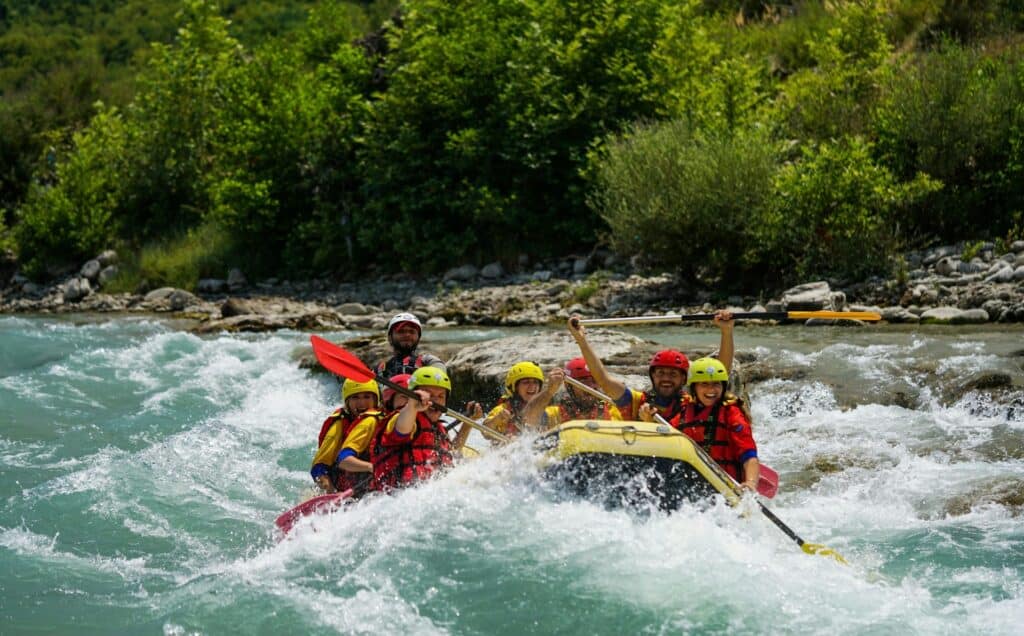Photo by Loren Dosti on Unsplash
Yellowstone National Park ranks as a globally unparalleled destination. Featuring erupting geysers, captivating geothermal phenomena, stunning waterfalls, remarkable wildlife, and exceptional hiking and camping ventures, it’s understandable that the park attracts over four million guests annually.
Equally expected, white water rafting in Yellowstone is a top activity for adventure-seekers in Montana. Given the park’s vastness and its breathtaking vistas, rafting stands out as one of the best activities to experience its majestic beauty.
Select the Appropriate Outfit
Even if you plan to remain aboard for the entire rafting trip, prepare to get drenched. Opt for waterproof and anti-rub garments that provide a protective layer between you and the boat. Steer clear of cotton since it retains moisture and draws warmth from your body. Instead, go for synthetic fabrics because they dry quickly.
When choosing footwear, prefer closed-toe shoes with laces like Dunlop volleys over sandals or flip-flops, which can easily slip off should you end up in the water. Based on the weather forecast and temperature, consider wearing wetsuits. They offer additional flotation and safeguard against the cold water.
Master the T-grip
The T-grip holds paramount importance as it helps in averting the risk of the paddle slipping from your grip and inadvertently causing injury to you or those around you by striking them in the head or chest.
At the onset of your rafting journey, instructors will showcase how to properly engage with the T-grip. It is crucial to always have one hand positioned at the paddle’s shaft base, with the other securely covering the T-grip. This technique ensures complete control over the paddle and safeguards against accidental impacts to either yourself or your fellow rafter.
Listen to Your Guide
Before your journey begins, your raft guide will provide a thorough briefing on safety practices and what you can anticipate during the trip. Absorb this orientation carefully, as it imparts vital knowledge for your upcoming river escapade.
While aboard the raft, maintaining your attention on your guide’s instructions is essential. They will direct you on the appropriate moments and techniques for paddling, advise on shifting your weight to maintain equilibrium in the raft, and outline procedures for the event of someone unintentionally falling out.
Don’t Panic
You may encounter unexpected moments during your whitewater rafting adventure on the Yellowstone River. It’s possible that a rapid might catch you off guard, or your raft could get snagged on a rock.
In these instances, remain calm and attentive to your guide’s instructions. Staying serene allows your mind and body to be in a better state to absorb directions and take the necessary actions to ensure your own safety and that of your fellow rafters.
Stay Alert
Traversing the nation for rafting adventures takes individuals to extraordinary sites, and the Yellowstone region does not fall short in this regard. The drive to Gardiner itself is marvelously picturesque.
Whether going through Yellowstone Park or Paradise Valley towards Gardiner, spotting wildlife such as elk, deer, black bears, and bison is typical. Additionally, the river journey offers abundant chances to witness nature’s inhabitants up close.
Rafters commonly see elk, deer, and antelope as they approach the riverbank to sip water. Birds of prey like eagles and ospreys are frequently sighted, along with the rare but delightful appearance of otter groups navigating the waters.
Endnote
It is essential always to have your personal flotation device on and adhere to the instructions provided by your guide. A key component of ensuring safety during rafting involves working together as a cohesive unit, following the captain’s lead.
